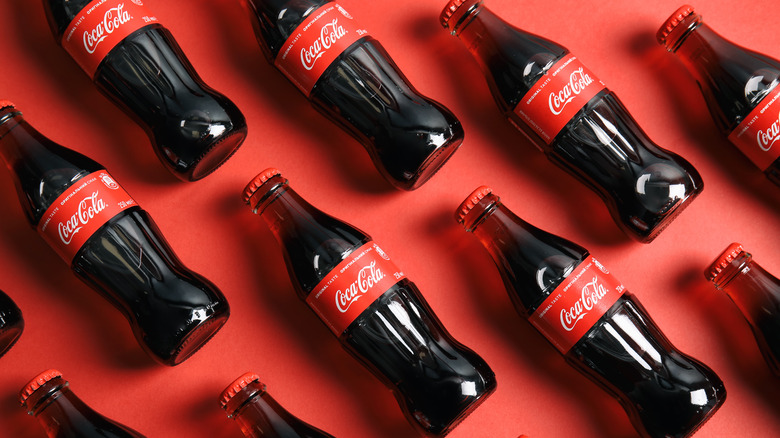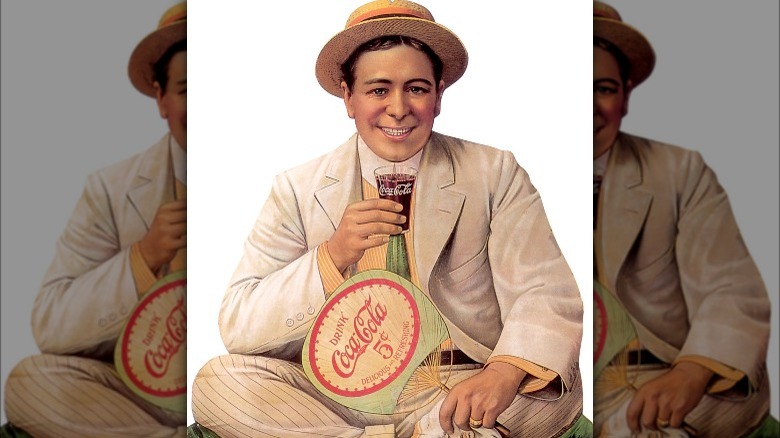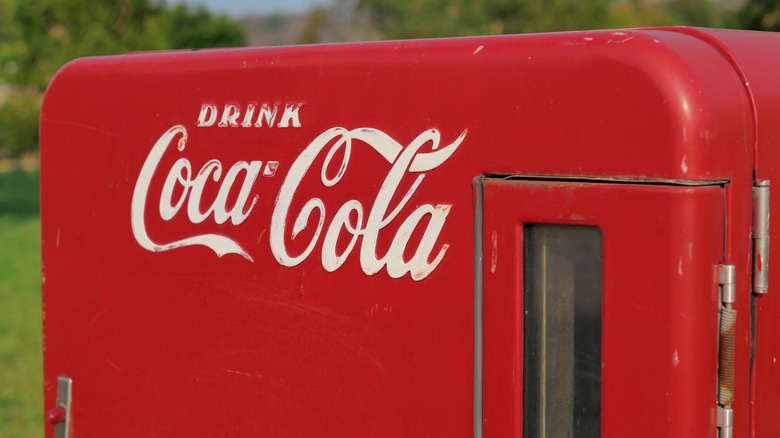The Bizarre Coin Coca Cola Tried To Influence The US Treasury To Make
Coca Cola is an undisputed American icon. Through both its long history and savvy marketing, it has managed to become a symbol of both summer refreshment and winter joy. From its humble beginnings in an Atlanta drug store, selling nine glasses a day, to the global soft drink juggernaut it is today, selling over a billion bottles per day, Coca Cola has had a wild ride of growth since 1886 (via CNBC).
With this massive growth comes massive piles of money, and with Scrooge McDuck money comes political power and influence. When the tide of public opinion began to turn away from cocaine in the early 20th century, Coca Cola used its lobbying power to carve out a special exemption for itself to continue importing coca leaves (via Furman University).
But Coca Cola's political clout wasn't limitless. In the 1950s the company made a personal request to President Eisenhower and the Treasury Department to issue a new coin denomination of 7.5 cents, a request which was politely declined (via Coin World).
The era of five-cent Coke
To understand how anyone, even one of America's most recognized brands, could have the temerity to ask the president for a purpose-built coin, we have to understand how the price of Coke got locked into five cents per serving for over 50 years (via Planet Money).
Even in 1886, five cents was cheap for a soda. The low price gave Coke an edge in the crowded tonic market of the late 19th century. In 1899 the company was approached about licensing its product for use in a hot new commodity: glass bottles. No one's sure exactly why, but the company president agreed to license Coca Cola for sale in bottles and signed a contract to sell his syrup at a fixed price in perpetuity.
Besides the fetters of this ill-advised contract, Coca Cola was also shackled by its own advertising. One of Coca Cola's great gifts was advertising and it used this gift to help keep the bottling licensees in check. Featured prominently on all of its advertisements was the price: 5¢. This effectively tied the hands of everyone who sold Coke, whether over the counter in a cafe or in a bottle. Although the contract was eventually renegotiated to more reasonable terms, Coca Cola still had a generation of drinkers engrained with the idea that Coke was five cents. It also didn't help that the advertising it used to control the bottlers was now forcing it to keep its prices locked in.
Vending machines
Because the price of a Coke was fixed for so long, Coca Cola managed to develop a large network of vending machines around the country. How many vending machines? There were fewer than 500,000 vending machines in the U.S. in the late '40s, and Coca Cola owned 400,000 of them. The problem was that these machines were designed to only accept one coin and they couldn't issue change (via Coin World).
At this point in its history, Coca Cola was ready to raise its prices, but because of its vending machine network it only had a few options. One was to double the price of a coke to 10 cents, a move the company felt was too drastic. Another option was to redesign their vending machines to accept more than one coin and give change, an expensive proposition. The option they decided on was to petition the U.S. government to mint a 7.5 cent coin so they could raise their prices without retooling their machines. Coca Cola also considered (but did not propose) a three-cent coin so the company could raise prices while only making a minimal investment in upgrading its vending machines (via Journal of Money, Credit and Banking).
Needless to say, Coca Cola did not get their coin. Vending machines were redesigned to give change and accept more than one coin. And the average global price for half a liter of Coke is just under a dollar.


